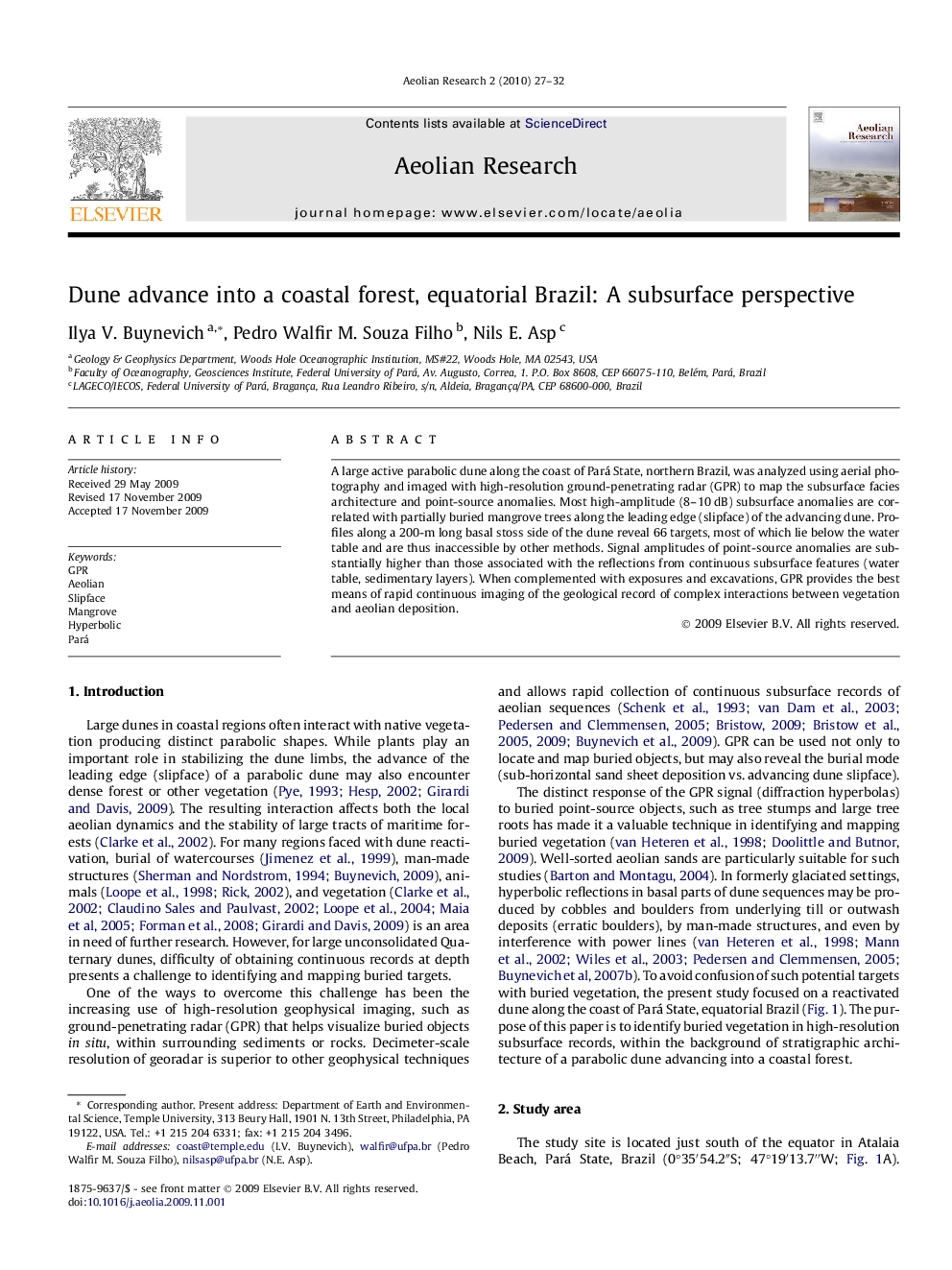| Article ID | Journal | Published Year | Pages | File Type |
|---|---|---|---|---|
| 4673981 | Aeolian Research | 2010 | 6 Pages |
A large active parabolic dune along the coast of Pará State, northern Brazil, was analyzed using aerial photography and imaged with high-resolution ground-penetrating radar (GPR) to map the subsurface facies architecture and point-source anomalies. Most high-amplitude (8–10 dB) subsurface anomalies are correlated with partially buried mangrove trees along the leading edge (slipface) of the advancing dune. Profiles along a 200-m long basal stoss side of the dune reveal 66 targets, most of which lie below the water table and are thus inaccessible by other methods. Signal amplitudes of point-source anomalies are substantially higher than those associated with the reflections from continuous subsurface features (water table, sedimentary layers). When complemented with exposures and excavations, GPR provides the best means of rapid continuous imaging of the geological record of complex interactions between vegetation and aeolian deposition.
